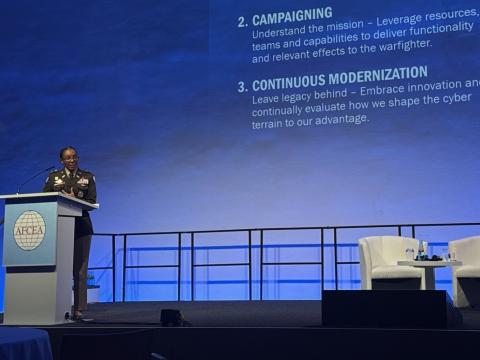DIA to Release Threat-Based Strategy Very Soon
The Defense Intelligence Agency (DIA) will release a new threat-based strategy very soon and is undergoing a reorganization to create a Directorate for Global Integration, says Lt. Gen. Scott Berrier, USA, the agency’s director.
“We have some changes at DIA that are cooking right now. The first is a new strategy. That is a strategic approach that includes intelligence advantage, a culture of innovation, allies and partnerships, and an adaptive workforce,” he says.
The DIA provides intelligence specifically on the capabilities and intentions of foreign militaries. Gen. Berrier was confirmed by the Senate in July of last year and took over as the DIA director in October. Shortly thereafter, he created an integrated study group of about 12 senior leaders and asked how the agency could be better postured to meet the Defense Department’s needs with a focus on strategic competition against potential adversaries such as China and Russia.
The study group contributed to the reorganization plan and the new strategy. Experts from across the organization offered input on the strategy, which marks an evolution from the previous strategy. “The old strategy as I would describe it was capabilities based. The way we’re looking at it right now is to focus on what the threat is—because that’s where the department’s focus is—and on what can we bring to bear to illuminate and help respond to those threats for the department,” the DIA director explains.
The threat, of course, includes both China and Russia with China being the primary concern. “We talk about the rise of China. I think China has risen. The investments that they have made, and the expansion of their military capability has been pretty astounding when you think about what they’re spending their precious defense dollars on, and the capabilities they have been able to pursue and produce is interesting.”
But Russia is not to be ignored, he warns. “Right now, China is the pacing threat, but I always tell people, ‘Don’t count Russia out.’ When you think about the nuclear triad that Russia has, they are an existential threat to the United States of America. They have proven through cyber attacks and the fact that they used chemical-biological weapons on their own citizens inside their own country and outside, it makes them a threat that we have to watch and watch very carefully.”
He suggests the changes will help to operationalize the intelligence provided by DIA analysts. So, rather than simply collecting, analyzing and reporting intelligence data, the agency also may provide options for addressing the information inside its reports. “What I’m trying to do is to put a small ‘o’ for ‘operationalization’ into DIA. That doesn’t mean I want DIA to be an intelligence combatant command,” he says.
The new strategy and reorganization are intended to position the agency to quickly provide critical intelligence. “This is all about dealing with sensitive intelligence in a timely manner to be able to provide new opportunities to the department that perhaps they were not thinking about with the grind of current intel and everything else going on,” Gen. Berrier elaborates.
The new Directorate for Global Integration reached an initial operating capability on July 1. It is being run by a senior official who has been named a deputy director for global integration, who will supervise the agency’s intelligence centers around the world, which are connected to the combatant commands. “He will also have some budget approval authorities over much of the rest of the agency. If you think about our Directorate for Science and Technology, if you think about our Directorate for Analysis and our Directorate for Operations, he and his staff will unify across our agency so that we can better posture it to identify opportunities for strategic competition,” Gen. Berrier offers.
The changes will allow the DIA to be more effective internally and externally across the defense intelligence community. “It’s a new way of thinking about the problem and leveraging all of those capabilities that we have globally to be able to look at what the Chinese, Russians and others are doing to us and how we can offer opportunities to counter that,” Gen. Berrier asserts.
The general public, however, will likely never know the benefits provided. “Once we build out our Directorate for Global Integration, I think you’re going to see some quick wins. We probably won’t be able to discuss those quick wins in an unclassified setting, but it’s the ability to take sensitive intelligence, to illuminate that information and then present it as opportunities to our key partners, whether that be combatant commands, whether that’s the Defense Department or foreign partners.”





Comments